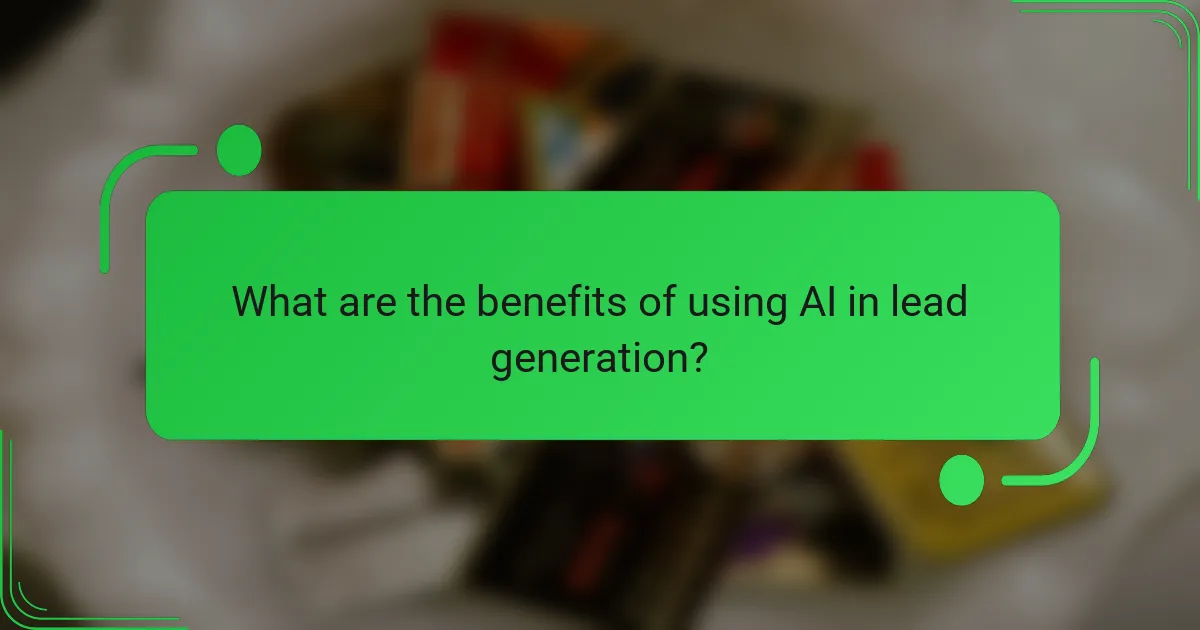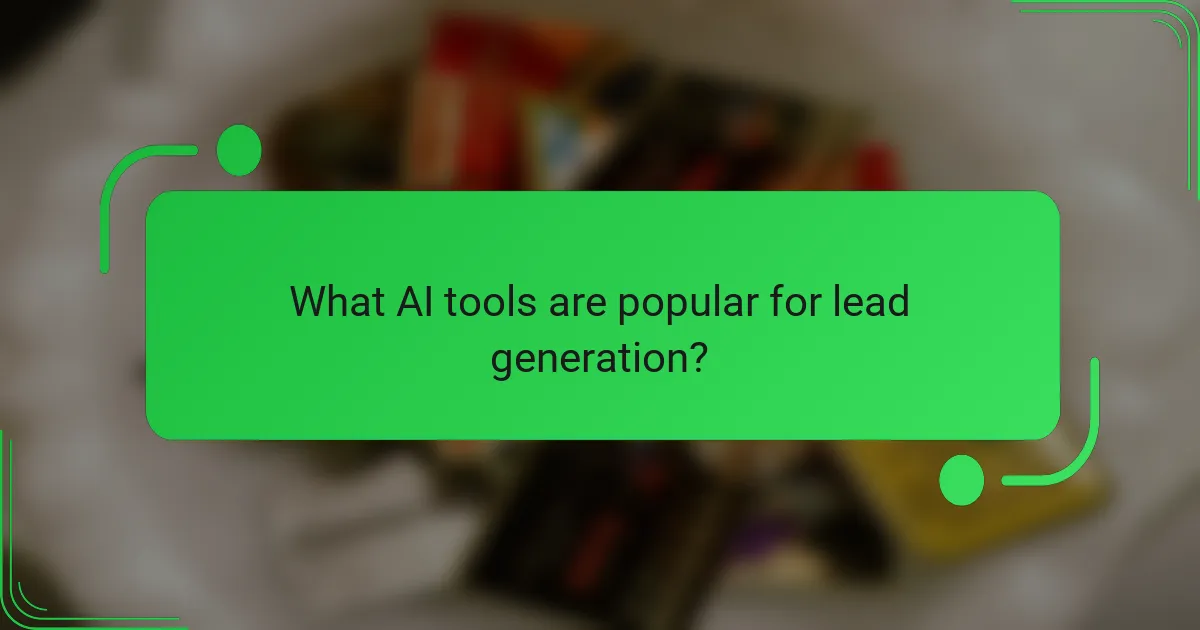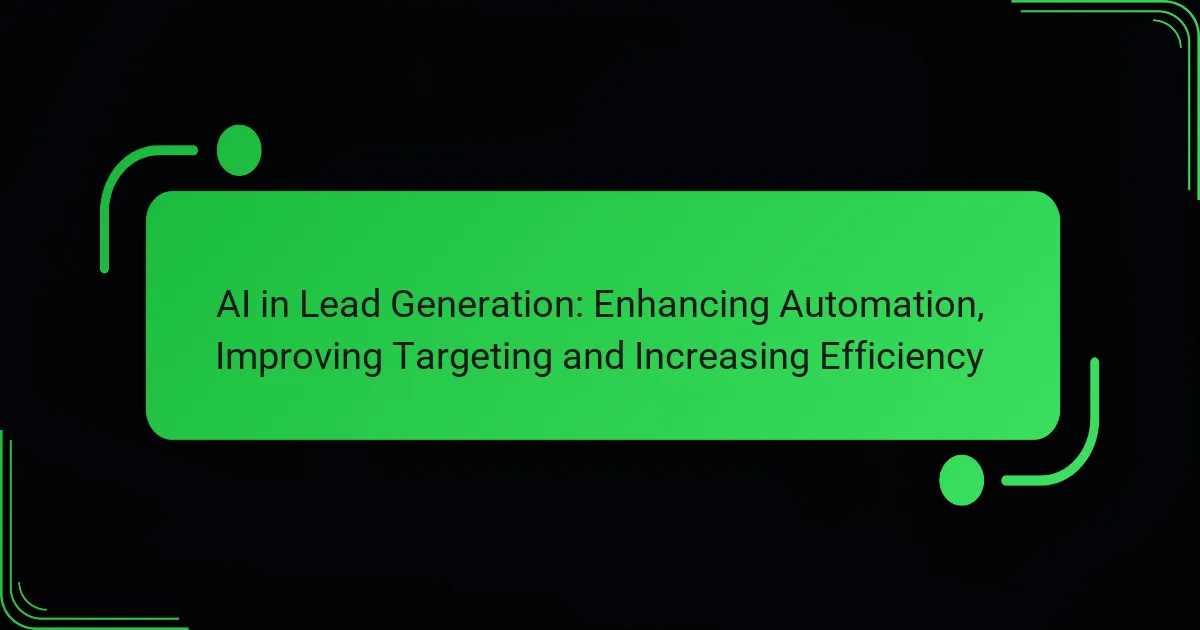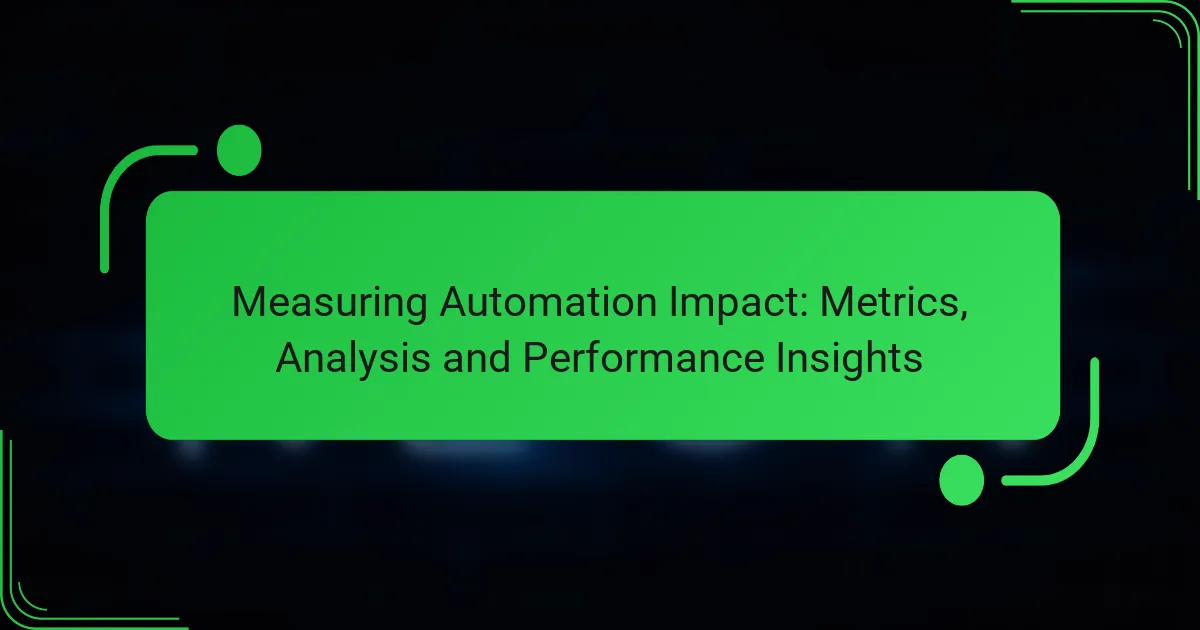Artificial Intelligence is revolutionizing lead generation by automating key processes, refining targeting strategies, and boosting overall efficiency. By utilizing advanced algorithms and data analytics, businesses can more effectively identify and engage potential leads, allowing for a more focused and strategic approach to marketing.

How can AI enhance lead generation in Canada?
AI can significantly enhance lead generation in Canada by automating processes, improving targeting accuracy, and increasing overall efficiency. By leveraging advanced algorithms and data analysis, businesses can identify potential leads more effectively and engage them in a timely manner.
Automated prospecting tools
Automated prospecting tools utilize AI to sift through vast amounts of data and identify potential leads based on predefined criteria. These tools can analyze social media profiles, online behavior, and industry trends to generate lists of prospects that are more likely to convert.
For Canadian businesses, using these tools can save time and resources, allowing sales teams to focus on high-quality leads. Popular options include platforms like LinkedIn Sales Navigator and HubSpot, which offer tailored prospecting features.
Predictive analytics for targeting
Predictive analytics harnesses historical data to forecast future behaviors, enabling businesses to target leads more effectively. By analyzing patterns in customer interactions, AI can help identify which leads are most likely to convert into customers.
In Canada, companies can use predictive analytics to refine their marketing strategies, focusing on specific demographics or regions that show higher engagement rates. This targeted approach can lead to improved conversion rates and reduced marketing costs.
Chatbots for lead engagement
Chatbots powered by AI can engage potential leads in real-time, answering questions and providing information 24/7. This immediate interaction can significantly enhance user experience and keep prospects interested in a company’s offerings.
For Canadian businesses, implementing chatbots on websites or social media can streamline lead engagement. They can handle common inquiries, qualify leads, and even schedule appointments, ensuring that no potential lead is overlooked.
Personalized email campaigns
AI can enhance personalized email campaigns by analyzing customer data to tailor content to individual preferences and behaviors. This personalization increases the likelihood of engagement and conversion.
In Canada, businesses can use AI tools to segment their email lists based on factors such as past purchases or browsing history. This allows for targeted messaging that resonates with specific audiences, improving open and click-through rates.
CRM integration with AI
Integrating AI with Customer Relationship Management (CRM) systems can optimize lead management by automating data entry, tracking interactions, and providing insights into customer behavior. This integration ensures that sales teams have access to the most relevant information at their fingertips.
For Canadian companies, using AI-enhanced CRMs like Salesforce or Zoho can streamline workflows and improve collaboration among teams. By automating routine tasks, sales representatives can dedicate more time to nurturing leads and closing deals.

What are the benefits of using AI in lead generation?
AI significantly enhances lead generation by automating processes, improving targeting, and increasing overall efficiency. These benefits allow businesses to focus on high-quality leads and optimize their marketing strategies.
Increased efficiency
AI streamlines lead generation by automating repetitive tasks such as data entry and initial outreach. This allows sales teams to allocate more time to nurturing relationships with potential customers rather than getting bogged down in administrative work.
For instance, AI tools can quickly analyze large datasets to identify promising leads, reducing the time spent on manual research. This efficiency can lead to faster conversion rates and a more agile sales process.
Improved targeting accuracy
AI enhances targeting accuracy by analyzing customer behavior and preferences, enabling businesses to identify the most relevant leads. Machine learning algorithms can segment audiences based on various criteria, such as demographics and online activity.
By utilizing predictive analytics, companies can tailor their marketing messages to resonate with specific segments, increasing the likelihood of engagement. This targeted approach often results in higher conversion rates compared to generic outreach.
Cost reduction
Implementing AI in lead generation can lead to significant cost reductions by minimizing the need for extensive manual labor and reducing wasted marketing spend. Automated systems can efficiently handle high volumes of leads without the proportional increase in staffing costs.
For example, businesses can save on advertising expenses by targeting only the most promising leads, thus optimizing their return on investment. This strategic allocation of resources can lead to a more sustainable business model.
Enhanced customer insights
AI provides deeper insights into customer behavior and preferences, allowing businesses to refine their lead generation strategies. By analyzing data from various touchpoints, companies can gain a comprehensive understanding of what drives customer decisions.
These insights can inform product development, marketing campaigns, and customer service improvements. For instance, knowing which features attract leads can help tailor offerings to meet market demands more effectively.

What AI tools are popular for lead generation?
Popular AI tools for lead generation include platforms that automate outreach, enhance targeting, and streamline the sales process. These tools leverage machine learning and data analytics to identify potential customers and optimize engagement strategies.
HubSpot AI tools
HubSpot offers a suite of AI tools designed to enhance lead generation through automation and personalization. Its features include predictive lead scoring, which helps prioritize leads based on their likelihood to convert, and chatbots that engage visitors in real-time, answering queries and capturing information.
Utilizing HubSpot’s AI capabilities can significantly reduce the time spent on manual tasks, allowing teams to focus on high-value interactions. For example, businesses can automate follow-up emails based on user behavior, improving response rates and nurturing leads effectively.
Salesforce Einstein
Salesforce Einstein integrates AI into the Salesforce platform, providing tools for smarter lead generation. It analyzes customer data to deliver insights on lead quality and engagement, helping sales teams tailor their approach for better outcomes.
With features like automated data entry and intelligent recommendations, Salesforce Einstein can enhance efficiency in lead management. Companies can expect improved targeting by using predictive analytics to identify which leads are most likely to convert, ultimately increasing sales productivity.
Drift chatbots
Drift chatbots are designed to facilitate real-time conversations with website visitors, capturing leads as they engage. These AI-driven chatbots can qualify leads by asking relevant questions and directing them to appropriate resources or sales representatives.
Implementing Drift can lead to faster response times and increased lead conversion rates. Businesses often see benefits from 24/7 engagement, ensuring that potential customers receive immediate assistance, which can be crucial in competitive markets.
Marketo AI features
Marketo’s AI features focus on optimizing marketing campaigns and improving lead generation efforts. Its tools include advanced segmentation and targeting, allowing marketers to create personalized experiences that resonate with specific audiences.
Marketo also offers predictive content recommendations, which suggest the most relevant materials to leads based on their behavior and preferences. This targeted approach can enhance engagement and drive higher conversion rates, making it a valuable asset for marketers looking to maximize their ROI.

How to choose the right AI solution for lead generation?
Choosing the right AI solution for lead generation involves understanding your specific business needs, integration capabilities, user experience, and pricing models. A well-selected AI tool can significantly enhance your lead generation efforts by improving targeting and increasing efficiency.
Assess business needs
Start by identifying your lead generation goals and the specific challenges you face. Determine whether you need a solution that focuses on data analysis, customer segmentation, or automated outreach. This clarity will help you select a tool that aligns with your objectives.
For example, if your primary goal is to increase the quantity of leads, look for AI solutions that offer robust data scraping and lead scoring features. Conversely, if quality is your focus, prioritize tools that excel in predictive analytics and customer profiling.
Evaluate integration capabilities
Check how well the AI solution integrates with your existing systems, such as CRM platforms and marketing automation tools. Seamless integration is crucial for maximizing efficiency and ensuring that your data flows smoothly between systems.
Look for solutions that offer APIs or built-in connectors to popular platforms like Salesforce or HubSpot. This can save time and reduce the risk of data silos, allowing for a more cohesive lead generation strategy.
Consider user experience
The user experience of an AI tool can greatly impact its adoption within your team. Choose a solution that is intuitive and easy to navigate, as this will encourage your team to utilize it effectively.
Request demos or trial periods to assess the interface and functionality. Pay attention to features like dashboards, reporting tools, and customer support options, which can enhance usability and overall satisfaction.
Analyze pricing models
Pricing models for AI lead generation solutions can vary widely, from subscription-based fees to pay-per-lead structures. Analyze your budget and determine which model aligns best with your financial strategy.
Consider not only the upfront costs but also potential long-term expenses. Some solutions may offer lower initial prices but could become costly as your lead volume increases. Evaluate the total cost of ownership to make an informed decision.

What are the challenges of implementing AI in lead generation?
Implementing AI in lead generation presents several challenges, including data quality, integration with existing systems, and the need for skilled personnel. Organizations must navigate these obstacles to effectively leverage AI for improved targeting and efficiency.
Data Quality and Availability
Data quality is critical for AI effectiveness in lead generation. Inaccurate or incomplete data can lead to poor targeting and wasted resources. Companies should invest in data cleansing and enrichment processes to ensure that the information used for AI models is reliable.
Moreover, the availability of relevant data can be a barrier. Organizations may need to gather data from multiple sources, including CRM systems, social media, and third-party providers, to create a comprehensive dataset for training AI algorithms.
Integration with Existing Systems
Integrating AI tools with existing lead generation systems can be complex. Many organizations use legacy systems that may not easily accommodate new technologies. It’s essential to assess compatibility and plan for potential disruptions during the integration process.
Choosing AI solutions that offer seamless integration capabilities can mitigate these challenges. Look for platforms that provide APIs or built-in connectors to facilitate data exchange between systems.
Skill Gaps and Training Needs
Implementing AI requires specialized skills that may not be readily available within the organization. Teams may need training in data science, machine learning, and AI tool usage to maximize the benefits of these technologies.
To address skill gaps, companies can consider partnerships with external experts or invest in training programs for existing staff. This approach not only builds internal capabilities but also fosters a culture of innovation.


